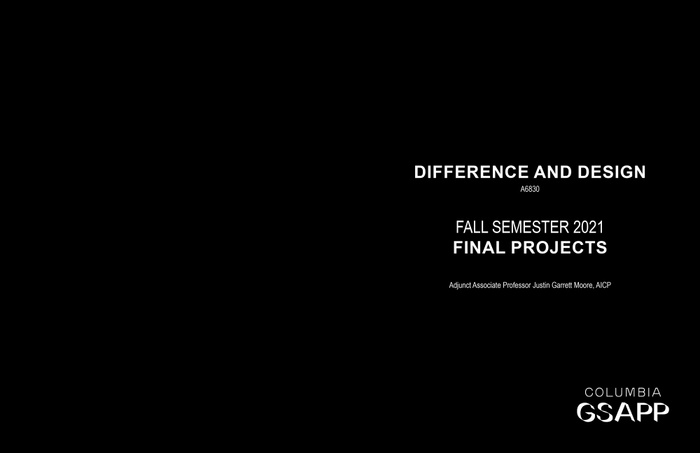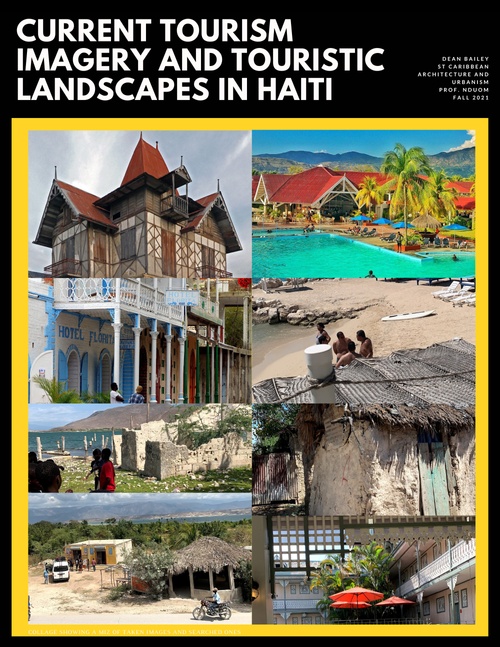During the 2021-2022 academic year, students from Columbia GSAPP collaborated with students from Howard University and Tuskegee University as part of a new trans-institutional initiative.
Fall 2021
Tourism, Tropicalization and the Architectural Image
This course, “Tourism, Tropicalization and the Architectural Image: Unpacking the Perception vs. Reality of Caribbean Architecture,” explored the construction and dissemination of tourism related images to advance various political, social, cultural, and economic goals. The course focused on the Caribbean as a case study, investigating its projection in the cultural imaginary as a tropical paradise and the singular narrative of an “exotic” fantasy that has developed out of tourism related imagery. It unpacked the role architecture has played and continues to play in the development and perception of the Caribbean picturesque in tourism imagery and examines issues pertaining to the tourist gaze, colonial consumption, representation, authenticity, simulated space, perception of place, and the flattening of history. Students analyzed various media used to disseminate tropicalized images (e.g., paintings, photographs and postcards). Students studied these images alongside an analysis of physical architectural developments in tourist spaces to understand where architectural tropes have persisted in service of the tourist gaze.
This class was a collaboration between Columbia University in New York City and Howard University in Washington, D.C.
Fall 2021
Difference and Design
Rather than monumentally reinforcing difference, design can be a process and a tool to positively and systematically address difference. A growing field of designers, organizations, and offices have shown that this work can be central or at least integral to architecture, landscape architecture, and urban design practice. This emerging field has been called social design, impact design, design for good, design justice, and other monikers. This seminar explored the following key questions:
- How has the built environment been shaped by difference?
- How do we make a difference in the design of our spaces, places, and cities?
- How do you want to make a difference through your practice as a designer?
This course operated as a hybrid in-person and virtual Zoom trans-institutional collaboration between Columbia GSAPP in New York and Tuskegee University’s Robert R. Taylor School of Architecture and Construction Science in Alabama and is affiliated with Dark Matter University. This partnership allowed for interaction among students from different backgrounds and fields of study in order to share a learning environment and bring diverse experiences and perspectives to the course.
View more work on Instagram by following @differenceanddesign2021.
Students: Abriannah Aiken, Bianca Bryant, Lucas Carvalho Macedo Coelho Ne, Daniela Deu, Siyun Ji, Howie Jiang, Yasmine Katkhuda, Rae Lei, Stephanie McMorran, Javier Ortiz, Govardan Rajasekaran Umashankar, Praditi Singh, Rotina Tian, John Tiernan, Carmen Yu, Kenny Zhou



































